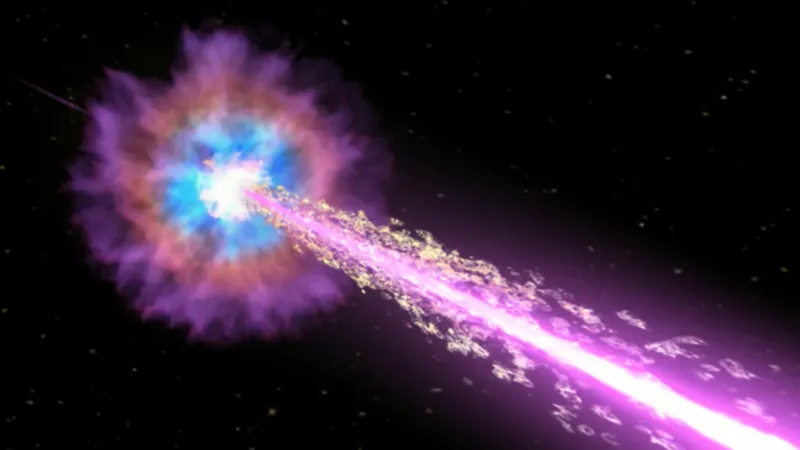
Astronomers Unveil Dramatic Cosmic Explosion from 12 Billion Years Ago: A Revolutionary Discovery!
2025-08-21
Author: Mei
A Groundbreaking Revelation of Cosmic Proportions
In an astounding breakthrough, astronomers are unraveling the mysteries of the universe thanks to a newly identified cosmic phenomenon known as Fast X-ray Transients (FXTs). These brief yet intense outbursts of X-rays, lasting only minutes, offer profound insights into stellar life cycles in the far reaches of the cosmos.
Tracking the Epic Journey of FXT EP240315A
Utilizing the advanced capabilities of the Einstein Probe X-ray space telescope, a team of researchers has traced FXT EP240315A back to its source, a journey taking a staggering 12 billion years. Peter Jonker from Radboud University expressed excitement about this milestone, stating, "This is the first time we've been able to pinpoint FXTs in near real-time, thanks to the Einstein Probe mission."
The Elusive Nature of FXTs
Occurring in galaxies billions of light-years away, FXTs have remained enigmatic, with astronomers speculating their origins lie in supernova explosions, resulting in the formation of black holes. Until recently, discoveries of FXTs were rare, primarily unearthed from archived data, which left researchers unable to conduct timely follow-up observations.
A Glimpse into the Early Universe
The astronomical event EP240315A, which occurred when the universe was less than 10% of its current age, radiated more energy in seconds than our sun will produce over its entire lifespan. Andrew Levan from Radboud University emphasized, "The combination of its immense distance and brightness marks a pivotal moment in our understanding of cosmic explosions."
Connecting FXTs and Gamma-ray Bursts: A Celestial Relationship?
The immense power of FXTs raises intriguing questions about their relationship with gamma-ray bursts (GRBs), one of the universe's most violent events. Jonker noted, "Our findings suggest that many FXTs may originate from GRB-like systems, but there's still much to explore in terms of their true diversity."
Unveiling Cosmic Secrets: The Role of Ultraviolet Light
The VLT observations revealed that the source of EP240315A was surrounded by minimal material, particularly a scarcity of hydrogen. This is significant since hydrogen absorbs ultraviolet light necessary for traveling across the universe. Researcher Andrea Saccardi stated, "About 10% of the ultraviolet light from the host galaxy escapes to ionize the universe, marking this as the most distant event where we observe light escaping from stars."
The Einstein Probe: A New Horizon in Cosmic Exploration
Since the successful launch of the Einstein Probe on January 9, 2024, the mission has identified and analyzed over 20 FXTs, showcasing their potential as a revolutionary tool for exploring stellar lifecycles and understanding the universe's early nature. Samantha Oates concluded, "The Einstein Probe is transforming our ability to study these transient X-ray phenomena and expanding our knowledge of the cosmos."
Join the Cosmic Adventure!
This remarkable discovery paves the way for further exploration into the fascinating life and death of stars, inviting passionate stargazers and scientists alike to remain engaged with the mysteries of our universe.




 Brasil (PT)
Brasil (PT)
 Canada (EN)
Canada (EN)
 Chile (ES)
Chile (ES)
 Česko (CS)
Česko (CS)
 대한민국 (KO)
대한민국 (KO)
 España (ES)
España (ES)
 France (FR)
France (FR)
 Hong Kong (EN)
Hong Kong (EN)
 Italia (IT)
Italia (IT)
 日本 (JA)
日本 (JA)
 Magyarország (HU)
Magyarország (HU)
 Norge (NO)
Norge (NO)
 Polska (PL)
Polska (PL)
 Schweiz (DE)
Schweiz (DE)
 Singapore (EN)
Singapore (EN)
 Sverige (SV)
Sverige (SV)
 Suomi (FI)
Suomi (FI)
 Türkiye (TR)
Türkiye (TR)
 الإمارات العربية المتحدة (AR)
الإمارات العربية المتحدة (AR)